Holocaust: SS officer's photos reveal Sobibor death camp
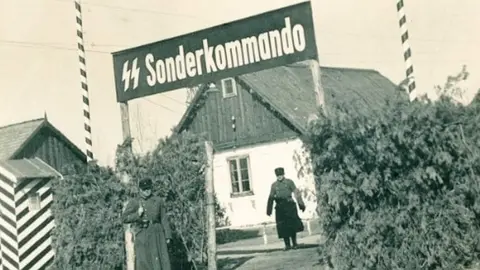 ushmm
ushmmPreviously unseen photos from the Sobibor death camp in Nazi-occupied Poland have been unveiled, including two purported to show notorious guard John Demjanjuk.
The Ukrainian was jailed in Munich in 2011 as a war criminal but died during the appeal process in 2012, aged 91.
Two photos, out of 361 from Sobibor and other camps, show Demjanjuk, a German Holocaust research centre says.
About 1.7 million Jews were murdered at Sobibor and two other camps in 1941-43.
Gas chambers were used at Sobibor, Treblinka and Belzec to kill Jews from ghettos in occupied Poland, in what Nazi Germany called "Operation Reinhard".
Hardly any photos of Sobibor existed previously, so the find provides a wealth of new details about Nazi atrocities.
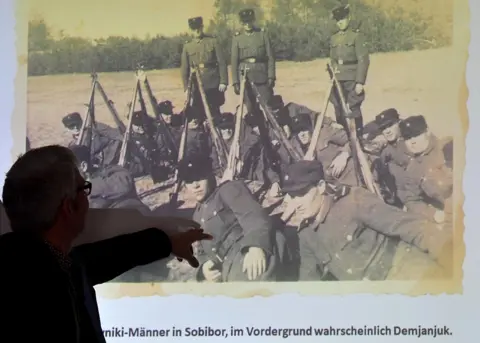 AFP
AFPThe photos displayed by the Topography of Terror museum in Berlin belonged to former SS deputy commandant Johann Niemann, and were handed over by his grandson in 2015.
Some photos show SS guards relaxing with alcohol and entertainment at Sobibor - not far from where Jews were being slaughtered.
The photos chart Niemann's Nazi career, including places where disabled people were murdered, in the so-called T4 "euthanasia" programme, and the Sachsenhausen and Belzec camps.
Niemann was killed by an axe-wielding Jewish inmate during a prisoner uprising in October 1943. The SS later destroyed Sobibor to wipe out evidence of their mass murder.
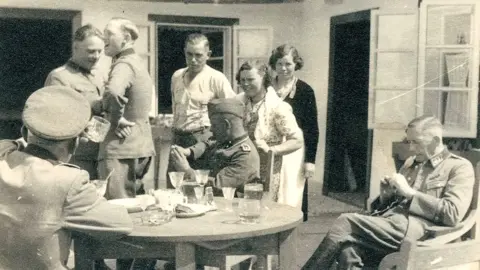 ushmm
ushmmThe photo presentation comes just a day after international commemorations for the 1.1 million people - mostly Jews - murdered by the Nazis at Auschwitz. Soviet troops liberated Auschwitz-Birkenau death camp 75 years ago.

Read more about the Holocaust:

Demjanjuk was found guilty in 2011 of involvement in the murders of 28,000 Jews at Sobibor. He denied having served there, or having had any role in the Holocaust.
He had spent decades working as a car mechanic in the US before being extradited - first to Israel, then to Germany.
 AFP
AFPThe SS trained auxiliaries from occupied Ukraine and other parts of the former Soviet Union to assist in the mass murder of Jews and other minorities. These helpers, recruited from among captured Soviet soldiers, were called "Trawniki men" by the Germans.
An Israeli court sentenced Demjanjuk to death in 1988, but the verdict was overturned by Israel's Supreme Court in 1993 because of doubts about his identity.
But investigators were not convinced by Demjanjuk's claims, and in 2009 he was extradited from the US to Germany, where he was found guilty and jailed.
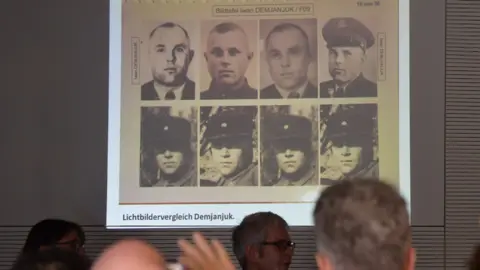 AFP
AFPThe sentencing of Demjanjuk broke new legal ground, as it allowed a conviction based on an individual's service in a death camp, without direct proof that they had committed an atrocity.
The photo collection has been handed over to the archives of the United States Holocaust Memorial Museum (USHMM) in Washington.
Niemann was a painter who began serving in Nazi concentration camps in the 1930s.
'Freedom to kill'
German historian Martin Cüppers says the collection unveiled on Tuesday shows how lower-ranking SS were given significance as the Nazis developed the machinery of mass murder.
"Nazi perpetrators eager to seize the initiative, such as Niemann in Belzec, were invested with an astonishing freedom of action, which they used to develop and try out new methods of killing," Dr Cüppers said.
One photo shows Niemann posing on a horse in early 1943 at the Sobibor ramp - the place where deported Jews arrived in cattle trucks.
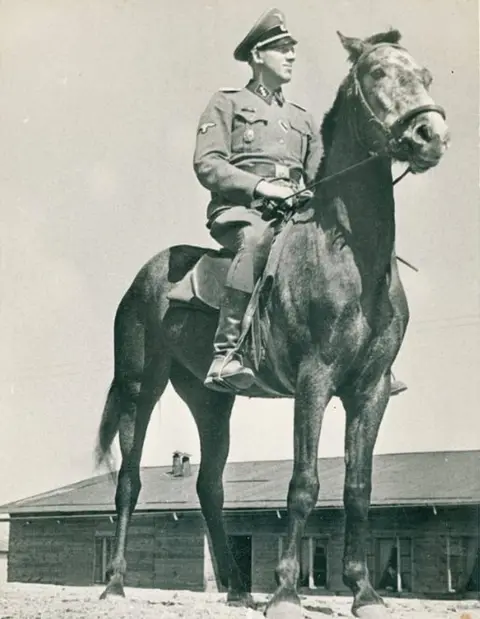 ushmm
ushmm
The Berlin researchers identify Niemann and two fellow Nazis - Karl Pötzinger and Siegfried Graetschus - posing outside a T4 killing centre in Brandenburg, west of Berlin, in 1940. Niemann had written "Brandenburg" on the back.
All three were responsible for burning the bodies of murdered "euthanasia" victims, the researchers say.
 ushmm
ushmmPart of Sobibor camp is seen in the photo below. Taken from a watchtower in early 1943, it shows woodpiles where slave labourers worked and, beyond that, SS accommodation and other buildings for the German guards.
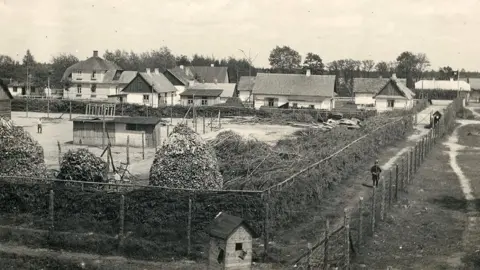 ushmm
ushmm